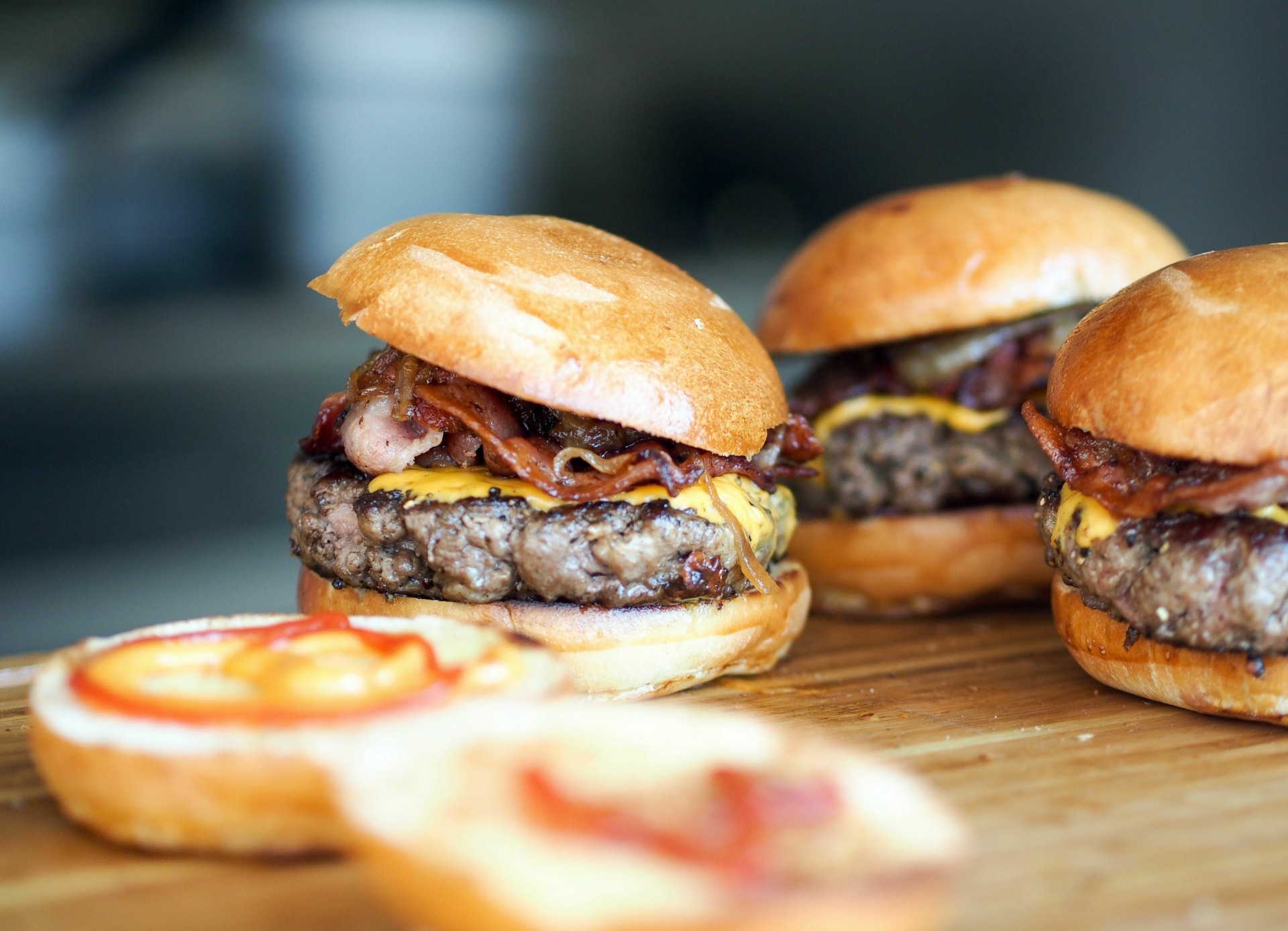You might be surprised (and potentially delighted) to learn that eating fat with cannabis is essential. (Yes, that means burgers and weed are a good match. Stop cheering and keep reading.) Carry on for the science behind this fact.
Cannabis cooks know that eating fat with cannabis, like butter and coconut oil, is essential for giving edibles their potency. That’s because cannabinoids like tetrahydrocannabinol (THC) and cannabidiol (CBD) are fat-soluble. This means that you need to eat marijuana edibles with fats to make the cannabinoids available to the body.
But recent research reveals that the connection between fats and cannabis is more complex than that, with important implications for making the most of marijuana’s many medicinal properties.
Cannabis Compounds Are Lipophiles—Why Is This Important?
Chemicals that people consume such as vitamins, supplements and medications are either water soluble or fat soluble. This means that they can dissolve and become bioavailable either by water or fat. Water-soluble substances such as vitamin C and B-complex vitamins dissolve easily in water, so that excess amounts of these chemicals are washed out through the kidneys.
But fat-soluble substances like vitamins A and K are lipophiles, or fat lovers. This means that they depend on fats in order to become available to the body. Instead of being flushed out through the kidneys, these substances accumulate over time in the body’s fatty tissues. This is why it can be easy to reach potentially toxic levels of these kinds of chemicals if a person consumes too much of them.
Cannabis researchers have identified more than 60 compounds in the cannabis sativa plant. Most of them appear to be inactive and don’t have a particular effect on humans. But euphoria-inducing THC and immune-boosting, inflammation-fighting CBD top the list of active cannabinoids that mimic the effects of the body’s own endocannabinoid system (ECS).
When you smoke or vape cannabis, these cannabinoid molecules can directly enter the capillaries in the lungs and quickly move from there into the bloodstream. Then they circulate to the brain and other parts of the body. But eating cannabis won’t produce the same result. It’s simply broken down by the digestive system and passed on out of the body.
This is because cannabis compounds are all lipophiles. They need fats to dissolve and become bioavailable. They also accumulate in the body’s own fatty tissues. So, to be most effective, you need dietary fat with cannabis—and the fattier the better.
Eating Fat with Cannabis Triggers the Intestinal Lymphatic System
The lymphatic system is a widespread network that supports immune functioning and helps the body eliminate toxins and waste. Hundreds of lymph nodes are found throughout the body, and most people are familiar with them as glands in the armpit, groin or neck that swell up in response to an infection.
But the body also has a lymphatic system in the digestive tract. And recent research has found that this intestinal lymphatic system plays an important role in making the compounds in cannabis edibles accessible to the body.
When a person eats a cannabis edible that contains a high-fat ingredient or has a relatively high- fat meal along with eating a marijuana edible, these fats appear to stimulate activity in the intestinal lymphatic system. In this way, the compounds that are dissolved in fats are transported into the bloodstream by this secondary lymphatic system and made available to the body.
Not All Fats Are Equally as Good at Making Marijuana Bioavailable
Many people who make cannabis edibles or extracts at home say that butter is a favorite carrier for delivering the full benefits of THC and/or CBD. This is because butter is a saturated fat. Saturated fats, which are mainly found in animal products, are high in long-chain fatty acids and are the most effective medium for dissolving cannabis compounds.
Plant-based fats—such as olive oil, sesame oil or avocado oil—are unsaturated. Although they can make cannabis compounds bioavailable too, they may not deliver the full effect as efficiently as saturated animal fats do.
One significant exception is coconut oil. In recent years, the coconut has taken the natural health world by storm for its ability to deliver the health benefits of saturated fat without the damaging effects that saturated fats can have on the heart and cardiovascular system. And now, cannabis edible enthusiasts are embracing coconut oil as perhaps the ideal carrier for edible cannabis compounds.
Coconut oil is around 90 percent saturated fat. But because it’s plant based, that fat derives from medium-chain fatty acids that don’t typically cause the hardening of the arteries and cholesterol clogging action that saturated animal fats can.
You don’t have to consume a lot of fat in an edible itself to get the benefits of cannabinoids. New studies reveal that eating a high-fat meal along with your cannabis edible can achieve similar results.
Cannabis Builds Up in Fatty Tissues
Cannabis has an affinity for fat in other ways, too. Because excess amounts of fat-soluble chemicals and compounds aren’t flushed from the body the way water soluble ones are, cannabis compounds can be stored in the body’s fat cells for 30 days or more.
Over this period of time, these compounds are gradually released back into the bloodstream and eventually eliminated. But in the meantime, they’re still detectable in the body. This is why it’s possible to test positive for THC well after the last time you consumed it. It’s also why some athletes who work out hard claim to get high from the THC that’s released when they’re burning body fat, well after they actually consumed marijuana.
It’s true that THC levels can test higher after a workout, because of what’s stored in fatty tissue. But is it enough for you to feel high, too? The jury’s still out on that one.
The complex ways in which cannabis and fat interact can have serious implications for the medical uses of cannabis. If you’re taking your cannabis in edible forms, whether—and how—you’re eating them with fat has a major impact on whether you’re getting the optimal dose of the cannabis compounds you need.
But cannabis compounds love fat. And combining them with the right kinds of fat can make the health benefits of cannabis edibles even more potent.
Photo credit: Niklas Rhöse
If you’re new to cannabis or just want to learn more, reach our to our team of experts. We’re ready to answer your questions (free of charge!) so you can get the most out of your cannabis experience.






